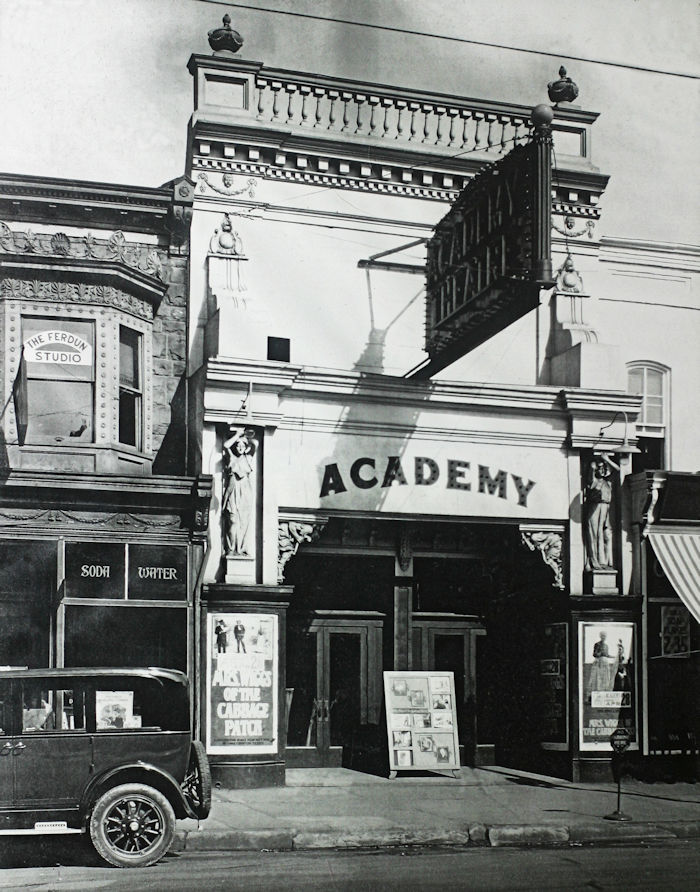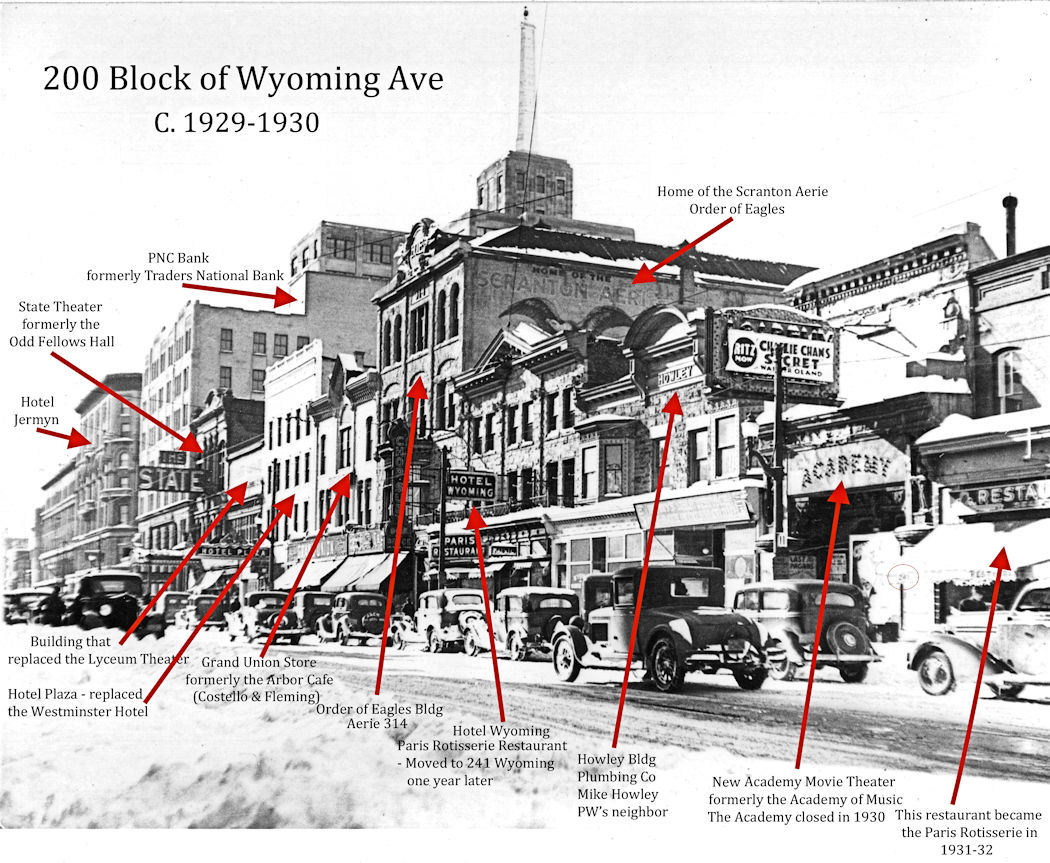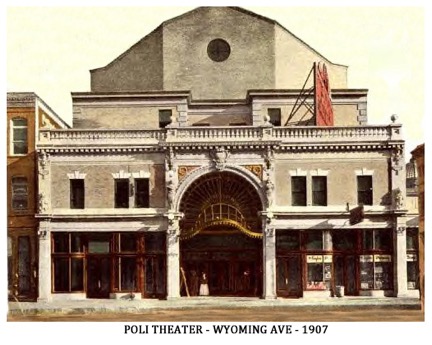
Click Image to enlarge
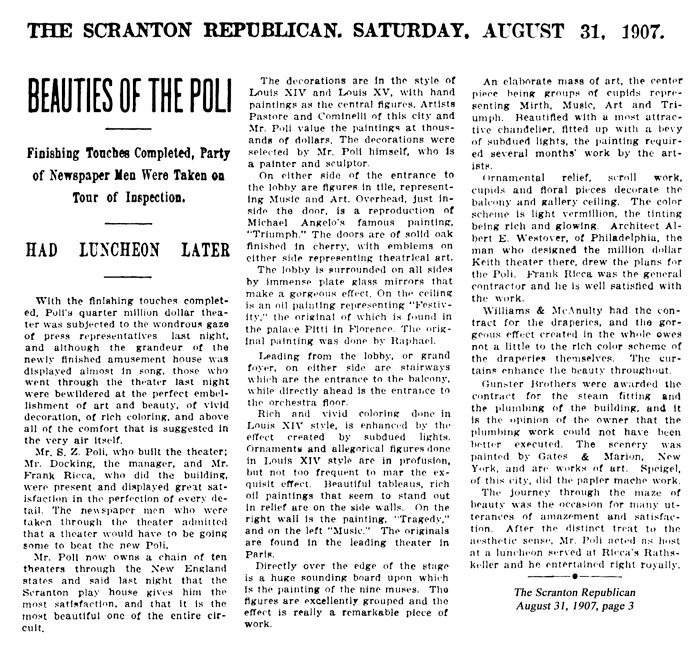
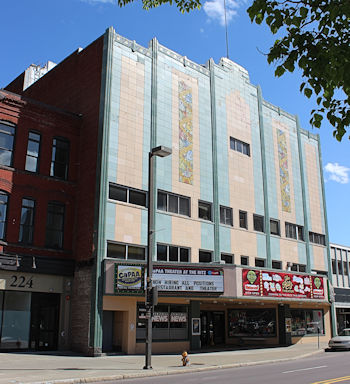
Renovated Poli Theatre - now called the Ritz, 2019
The Ritz Theater has a history page worth visiting.
This section of the 1918 map of Scranton shows the Poli and many other theaters (scroll down one block from the top).
THE SCRANTON REPUBLICAN,
Saturday, Aug, 31, 1907,
pg. 3
BEAUTIES OF THE POLI
Finishing
Touches
Completed, Party of Newspaper Men Were Taken on Tour of Inspection. Had Luncheon Later.
With the finishing touches
completed, Poll's quarter million
dollar theater was subjected to the wondrous gaze of press
representatives last
night, and although the grandeur of the newly finished amusement house
was
displayed almost in song, those who went through the theater last night
were
bewildered at the perfect embellishment of art and beauty, of vivid
decoration,
of rich coloring, and above all, of the comfort that is suggested in
the very
air itself.
Mr. S. Z. Poli, who built the
theater; Mr. Docking, the
manager, and Mr. Frank Ricca, who did the building, were present and
displayed
great satisfaction in the perfection of every detail.
The newspaper men who were taken through the
theater admitted that a theater would have to be going some to beat the
new
Poll.
Mr. Poli now owns a chain of
ten theaters through the New
England states and said last night that the Scranton play house gives
him the
most satisfaction, and that it is the most beautiful one of the entire
circuit.
The decorations are in the
style of Louis XIV and Louis XV,
with hand paintings as the central figures. Artists Pastore and
Comineili of
this city and Mr. Poli value the paintings at thousands of dollars. The
decorations were selected by Mr. Poll himself, who is a painter and
sculptor.
On either side of the entrance
to the lobby are figures in
tile, representing Music and Art.
Overhead, just inside the door, is a reproduction of
Michael Angelo's
famous painting, "Triumph." The doors are of solid oak finished in
cherry, with emblems on either side representing theatrical art.
The lobby is surrounded on all
sides by immense plate glass
mirrors that make a gorgeous effect. On the ceiling is an oil painting
representing "Festivity," the original of which is found in the
palace Pitti in Florence. The original painting was done by Raphael.
Leading from the lobby, or
grand foyer, on either side are
stairways which are the entrance to the balcony, while directly ahead
is the
entrance to the orchestra floor.
Rich and vivid coloring done in
Louis XIV style, is enhanced
by the effect created by subdued lights. Ornaments and allegorical
figures done
in Louis XIV style are in profusion, but not too frequent to mar the
exquisite
effect. Beautiful tableaus, rich oil paintings that seem to stand out
in relief
are on the side walls. On the right wall is the painting, "Tragedy,” and on the left "Music."
The originals are found in the leading theater In Paris.
Directly over the edge of the
stage is a huge sounding board
upon which is the painting of the nine muses. The figures are
excellently
grouped and the effect is really a remarkable piece of work.
An elaborate mass of art, the
center piece being groups of
cupids representing Mirth, Music, Art and Triumph. Beautified with a
most
attractive chandelier, fitted up with a bevy of subdued lights, the
painting
required several months' work by the artists.
Ornamental relief, scroll work,
cupids and floral pieces
decorate the balcony and gallery ceiling. The color scheme is light
vermilion,
the tinting being rich and glowing. Architect Albert E. Westover, of
Philadelphia, the man who designed the million dollar Keith Theater
there, drew
the plans for the Poll. Frank Ricca was the general contractor and he
is well
satisfied with the work.
Williams & McAnulty had
the contract for the draperies,
and the gorgeous effect created in the whole owes not a little to the
rich
color scheme of the draperies themselves. The curtains enhance the
beauty
throughout.
Gunster Brothers were awarded
the contract for the steam
fitting and the plumbing of the building, and it is the opinion of the
owner
that the plumbing work could not have been better executed. The scenery
was
painted by Gates & Marion, New York, and are works of art.
Speigel, of this
city, did the papier mache work.
The journey through the maze of
beauty was the occasion for
many utterances of amazement and satisfaction. After the distinct treat
to the
aesthetic sense, Mr. Poli acted as host at a luncheon served at Rlcca's
Rathskeller and he entertained right royally.
 Lackawanna
County, Pennsylvania, USGenWeb
Lackawanna
County, Pennsylvania, USGenWeb
